Our Blog - Tuscany 2024 Trip - Balsamic Tour at Leonardi Balsamic Vinegar in Modena, Italy
The official "aceto balsamico" is a dark, concentrated, intensely flavored vinegar originating in Modena, made wholly or partially from grape must: freshly crushed grape juice with all the skins, seeds and stems. While "aceto balsamico" (or balsamic vinegar) itself is not regulated, there are a couple specific types that are "regulated" (or protected), similar to wine protections. Two of them are DOP (Designation origin protection): Aceto Balsamico Tradizionale di Modena DOP and Aceto Balsamico Tradizionale di Reggio Emilia DOP, and one is an IGP (Protected geographical area). Since we were going to pass by Modena anyway, we booked a tour at the Acetaia Leonardi balsamic vinegar farm (note, you can change the language with the menu on the right).
During the tour, I learned a lot about balsamic vinegar (including that the stuff you buy at the grocery store isn't that great!). To be "true traditional balsamic vinegar" (as defined and certified by the Balsamic Consortium), it must only use Trebbiano and Lambrusco grapes and the juice then has to be aged for a minimum of 12 years in a "battery" of several barrels of successively smaller sizes. These barrels are made of different woods such as chestnut, cherry, oak, mulberry, ash, and juniper, and at least 3 different woods must be used, but sometimes up to 7 different types of wood. Using different wood barrels imparts different flavor profiles and gives the vinegar more complexity. There are some that are sold here that use a single type of wood, like juniper or cherry, and you can taste the difference between them. I'll talk more about the process as we go through the tour.
The Leonardi farm has been in the same family for 4 generations and a member of the family still owns it. I call it a farm because the farmhouse is surrounded by 10 hectares of vineyards mainly with grapes varieties of Trebbiano (white grape) and Lambrusco (red grape) that is used. It is a "closed cycle" farm since all the production steps take place in the same location. The guide mentioned that the reason that production of balsamic vinegar is only in Modena and Emilia Romana is that there is a specific bacteria that lives only in this area that is required to make the vinegar. The building in the 2nd picture is now the store but is the original family home.
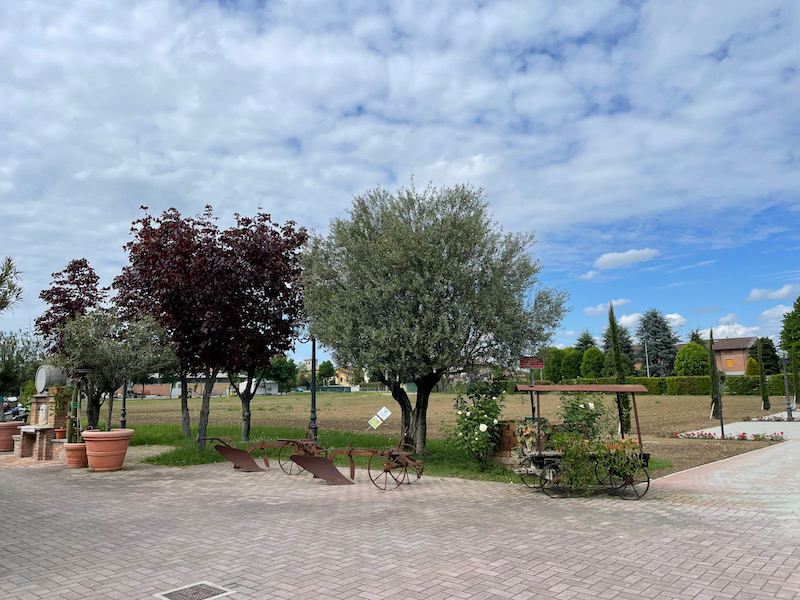

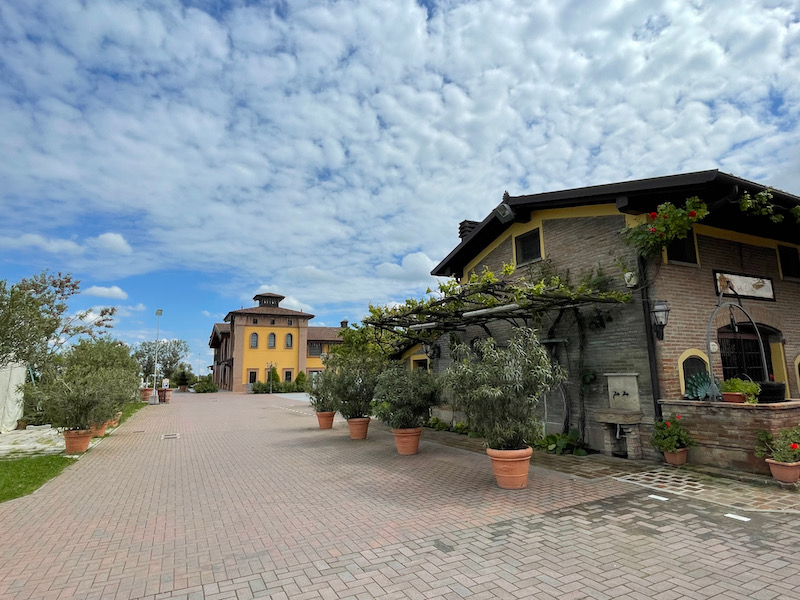
We then went up to see the barrels being aged. Once the grapes are harvested and pressed, it is boiled down to a minimum sugar concentration of 30%-50% (depending on the producer). It is then put into wooden barrels for aging. But this process is a bit complex in-and-of itself. The vinegar is aged in a group of barrels (called a battery) of at least 9 barrels of decreasing size, from 180 liters down to 10 liters. The makeup of the wood barrels for the battery is how the individual producer creates their own flavor profile. They are filled to 75% of capacity and age for a minimum aging period of 12 years. This is also different from wine in that the barrels are in an attic, subject to the heat-and-cold, unlike wine that sits in a cellar at a constant temperature. The fermentation process occurs in the summer and then it "sleeps" during the cold winters. You can also see that there is a white piece of cloth on each barrel ... there is actually a hole in the barrel because the bacteria that is needed has to breath, the white linen allows air to circulate so that the bacteria can breathe while still keeping out anything else.
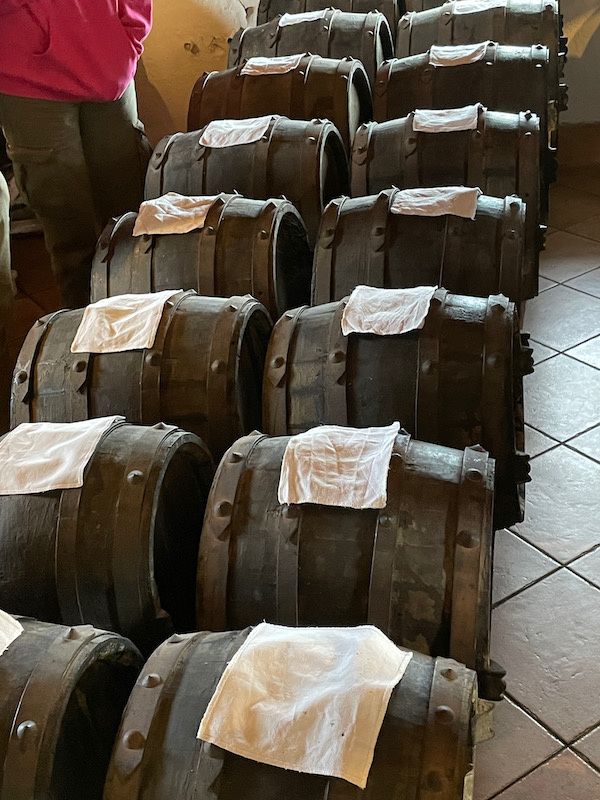
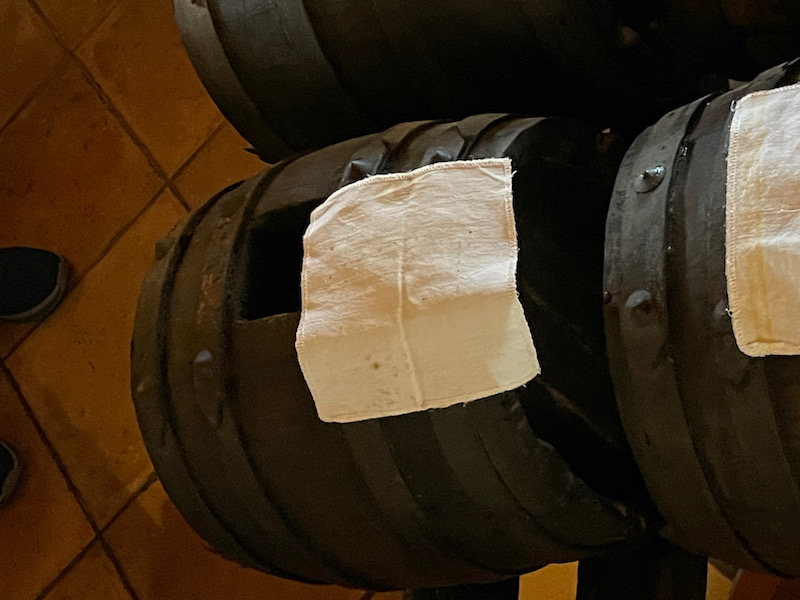
After a minimum of 12 years (but more like 30 for this producer), they do a process called "transfers". Let's say you are bottling a batch of 30-year vinegar. When the smallest barrel reaches 30 years, you can do a "withdraw" from that smallest barrel during the winter when the vinegar is "sleeping". So you can take up to 1/3 of the volume of the barrel, so let's say you take 3 liters from a small 10-liter barrel to bottle. Then you "transfer" 3 liters from the next larger barrel into the small one. Then you continue with each subsequent larger barrel, transferring the amount removed with the same amount from the next larger-sized barrel. When you get to the largest barrel, you add in the freshly cooked "new" juice. So in fact (and I asked this question), the 30-year-old vinegar is a minimum-30-year-old because when the next withdraw is done next year, 2/3 of the smallest barrel is actually 31 years old :-)
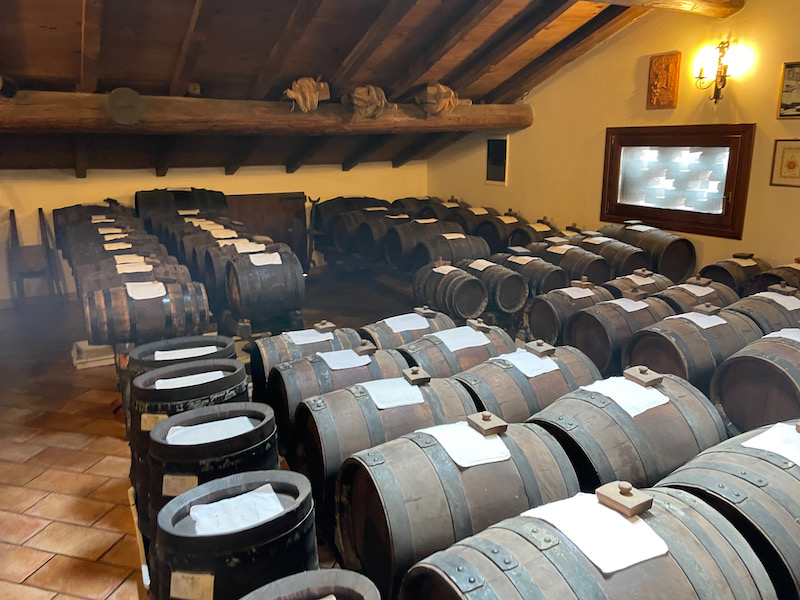
During the tour, we tasted 5 different vinegars (3 of the traditional at different ages, including one that was aged 100-years, and then the 2 that were done in only 1 type of wood). These were tiny little tastes of only a few drops, but enough to get the flavor. Then we headed back to the shop for a sit-down that had Parmigiano-Reggiano cheese topped with balsamic vinegar and a glass of Lambrusco wine. After that .. I did some shopping! Some for us, some for gifts for friends.